Bear wakes up: Modernization of Russian armored vehicles.
Despite the recent economic woes, realized several major programs of modernization of the Russian land forces.
Russia now has a significantly smaller military power than it was in Soviet times, but, nevertheless, still a formidable army. The size of the ground forces of the Russian Federation has about 300 000 people of personnel. In addition, Russia retains the elite airborne troops numbering 45,000 people, while the Marine Corps subordinate to Russian Navy has about 10,000 people.
In the 90 years the Russian military were in a deep crisis due to a total nedofinasirovaniem, radical reform and cuts. At that time the country was involved in two major wars against separatists in Chechnya. The first wave of radical restructuring and reform of the ground forces swept after the end of the first Chechen campaign. Then, from 2001 to 2004 went further reorganization and downsizing in an effort to make the army more adapted to the new economic and geopolitical realities that faced Russia.
The five-day war with Georgia in the territory of the breakaway enclave of South Ossetia in August 2008 demonstrated that the army was poorly prepared for modern warfare with the use of conventional weapons, as there was a lot of organizational weaknesses and experienced shortages of some types of weapons.
This forced the military leadership to start a new wave of radical reforms, divided into three stages, the last of which is scheduled for completion by 2020. Among the main objectives of the reform was the complete replacement of the arsenals of the Soviet era to the end of this period.
At the beginning of the reforms the Russian defense budget was full of petrodollars, which allowed the Ministry of Defence launched an ambitious rearmament program that will cover all kinds and types of forces. However, the Russian economy today is in a pretty sorry state due to the low prices for oil and gas, and the sanctions imposed by the West after the annexation of Crimea in March 2014. The growing economic crisis has led to reduction of the Russian military revenues in 2015 by 3.8%, while the reduction for 2016 was 5%.
The difficult economic situation makes it impossible to complete the replacement of Soviet weapons systems in the Russian Armed Forces in 2020, so this will be a long process, which at best can be completed no earlier than the middle of the next decade. A large number of new weapons systems are still in a development or at the initial stage of mass production.
Winged mobility
Russian Airborne Troops (VDV) is an independent native airmobile troops who are in a state of high alert. Armed with VDV has special aviadesantiruemye armored combat vehicles, which are to be delivered to a place can be dropped onto a parachute platform with heavy transport aircraft IL-76 and AN-124.
In 2004, Airborne started to receive the new combat vehicles BMD-4, but a year later by the manufacturer, the Volgograd Tractor Plant (VgTZ), was declared bankrupt and production was halted.
Kurgan Engineering Plant (KMZ) received an urgent task to develop a new machine, which in 2008 was first introduced under the designation of BMD-4M. In fact, the machine is an elongated and lightweight version of the BMP-3.
The first production examples were delivered to the landing forces in March 2015. By the end of 2016 Airborne will be delivered about 60 machines, designed for the replacement of obsolete machinery BMD-2. On the basis of BMD-4M has been designed tracked armored personnel carrier, received the designation BTR-MDM "Shell"; the car can carry 13 paratroopers.
Armed with the Airborne also includes a self-propelled anti-tank gun aviadesantiruemaya Sprut-SD with 125-mm gun, which can also be used as a light amphibious tank. It was first introduced in 2005 after a protracted development work, but also the production was stopped after VgTZ bankruptcy. An improved version of Octopus-SDM1 also been developed CMH. He is armed with a gun, but is based on the BMD-4M chassis.
Revolutionary armor
Tank T-14 Armata is considered the most important program on the armored car. Full-scale development of this versatile armored tracked platform began in the years 2009-2011 by the Scientific and Production Corporation "Uralvagonzavod" (DC) in Nizhny Tagil. The goal was to develop a new generation of a large family of combat vehicles to the general crawler. The first version of the main battle tank (MBT) was first shown in May 2015 Victory Parade in Moscow.
The design of MBT T-14, also known as Object 148, differs radically from the traditional structure of Russian tanks, since the T-64, which was born in the 60's of last century. T-14 has three crew members, which are placed in an armored compartment in the front of the case. Reinforced capsule is designed to increase the chances of survival in the event of a direct hit or a fire in the engine-transmission compartment.
Like all other Russian MBT tank T-14 armed with a 125 mm smoothbore gun with automatic loader, which can also carry out launches of guided missiles. The gun under the designation 2A82 is a completely new model. It is reported that it has significantly better performance compared with a gun 2A46, laying down on the previous model tanks.
Perhaps the biggest innovation project T-14 is an uninhabited tower. There is speculation that its large size will allow in the long term without significant modifications to install the 152-mm gun.
The development team has put a lot of effort to improve combat survivability T-14 in the fight against modern tanks. There is not a lot of reliable information on the new complex of active protection (KAZ) "Afghani", which is one of the key elements to enhance the survivability of the new tank. It is assumed that it consists of a set of infrared, ultraviolet and radar sensors to determine the attacking missiles and rockets with which he fights, using as a means of direct and functional lesions. In case of refusal KAZ Afghani tank T-14 may rely on the dynamic protection system (RS) "Malachite", covering most of its surface, including the roof of the tower. Under the blocks there DZ layer composite armor undisclosed thickness to provide additional protection.
The high mobility of T-14 is provided by a 12-cylinder diesel engine capacity of 1500 hp The tank also features an active suspension system.
Plans for the acquisition tank T-14 army units are not entirely clear. An experimental batch of tanks, which will participate in the final stage of production test. After their completion, the car will be delivered to the Russian military to military trials.
According to Vyacheslav Khalitova, Deputy Director General of Uralvagonzavod, the production capacity of the plant allows to rearm the T-14 armored Russian army units within 5-10 years. In UVZ say they are able to produce up to 2020 to 2300 MBT, but this possibility can only be seen as a purely theoretical figure, which is not possible with the technical and financial points of view. However, the T-14 has the highest priority among the plans for re-armament and, of course, will get the lion's share of funds allocated to finance the modernization of armored vehicles.
April 19, 2016 Deputy Minister of Defence, in charge of this program, Yuri Borisov said that has already placed an order for about 100 tanks. This party is for performance tests and according to him, the initial limited order is consistent with the approach of the Ministry of Defence to the procurement of a "reasonable sufficiency".
In May 2015 he was introduced by another member of the family Armata - heavy IFV T-15 (object 149). The engine is installed in the car in front, and the department for nine infantry located aft. By car T-15 unmanned combat module installed Boomerang-BM, armed with 30-mm cannon 2A42, coaxial machine gun 7.62 mm PKT and four anti-tank Kornet. It is expected that the BMP heavy T-15 will be produced in several different ways, including with various weapons, including a tower with 57-mm cannon and 120-mm mortar / cannon.
The heavy IFV T-15 offers the same level of protection as the tank T-14, including complexes Afghani and Malachite. Sources in the company Uralvagonzavod also stated that the T-14 and T-15 are designed for combat in the same battle formations and will be equipped with a common tactical data exchange system. The video was shown in 2015 armored recovery vehicle T-16 on the basis of the same universal platform track.
Rebirth MBT
It is clear that in the foreseeable future, the Russian army will not get enough of tanks T-14, so it must rely on the modernization of the existing armored vehicles. Her large fleet of MBT consists of three main types: T-72, T-80 and T-90.Tank T-90 and its modifications are considered to be the most modern MBT, composed by the Russian Army. The base tank T-90, created in the late 80s, is a deep revision T-72B. Its production began in 1992 and lasted until 1998; It was made from 120 to 160 machines. Most of these tanks is used for training, or is on a long-term storage.
Production of the upgraded version of T-90A «Vladimir» started in 2004, he has a new welded turret and engine B-92S2 1,000 hp Among the new systems also include an upgraded gun 2A46M-5, a night sight Buran M, an advanced complex optical-electronic suppression Blind-1M and many other elements that increase lethality and survivability.
In 2006 he was presented with a night sight PAS matrix Catherine-FC thermal imager French company Thales. Until 2011, this gun was produced 360 tanks T-90A, but then production was halted in connection with the plans of T-14 tank production. Uralvagonzavod also proposed an improved version of T-90AM «breakthrough», but the Russian Ministry of Defence has not shown him any serious interest. However, in the last year were discussions on the modernization of T-90A tanks using the new system, which was originally intended for the variant T-90AM.
After stopping the production of T-90A Russian Defense Ministry launched a program of modernization of part of its MBT T-72B. B3 Standard was introduced in late 2011 as a more affordable alternative to the means of production resumption T-90A.
Original modernization in accordance with B3 standard includes overhaul of the tank, the integration of multi-channel sight Sosna-U, the new radio station, a meteorological sensor and ballistic computer. The fire power increased through the integration of 2A46M-5 guns have improved gyroscopic stabilization and more efficient automatic loader that allows you to shoot new types of ammunition. Survivability of the T-72B3 has been enhanced with the installation of RS "Kontakt-5" blocks.
By the beginning of 2016 Uralvagonzavod set 600 upgraded tanks. Program T-72B3 has reduced risk and cost in comparison with T-90A project and modernized tanks according to some are a little more combat features compared to the basic model T-72B. However, the persistence of B3 remains at a low level due to the now obsolete system DZ "Kontakt-5".
At the beginning of 2016 the Ministry of Defence has ordered a comprehensive modernization of their MBT T-72B to improved standards in order to significantly improve the overall lethality and survivability. In late January, it was announced that the contract for the modernization of the first batch of 32 T-72 tanks, which must be fulfilled by the end of this year. Behind him followed another contract in March, according to which the number of modernized tanks had increased to 154; on schedule the last of them should get the army at the end of 2017.
The upgraded machine has a more powerful diesel engine in-92S2F capacity of 1130 hp, advanced control system, 12.7-mm machine gun Cord mounted on the tower, the new system DZ "Relic" and latticed screens to protect the engine compartment.
Tank fleet of the Russian army also includes a respectable number of MBT T-80U gas turbine engine, but to modernize this model, there are no plans; it will be removed from service following the adoption on the tank T-14 weapons.
Creating BMP
Kurganets-25 (object 695) is the latest tracked infantry fighting vehicles developed Kurganmashzavod. It differs from previous generations of machines considerably large size, which allows it to compare with Western machinery, such as the American BMP M2 Bradley. As in the case of heavy T-15 infantry fighting vehicles, to increase survivability on the battlefield, saturated ATGM and RPG, set her CAP "Afghani" and the CLE "Malachite".
Object 695 has a crew of three people and transports up to eight paratroopers. The machine installed remote controlled weapon station Boomerang-BM with 30-mm cannon and coaxial machine gun, but it is expected that the BMP will get more powerful weapons after the start of series production.
Object 693 - this is the second combat vehicle based kurganets-25 platform. Tracked armored personnel carriers armed with remotely controlled 12.7-mm machine gun, but it does not have some elements KAZ "Afghani".
In September 2015 Concern "Tractor plants" announced that the Russian military have expressed serious concern about the large size kurganets-25 family of vehicles, calling it a "shooter RPG dream." However, the development platform will continue, and state tests tentatively begin after 2017. This means that mass production could begin at the end of the decade, provided that the Ministry of Defence approves the machine for adopting.
Russian motorized infantry of the two-tracked infantry fighting vehicles are equipped with - legacy of the BMP-2 and BMP-better armed 3. no plans to upgrade the first of these, it is expected that it will gradually be replaced by newer models.
Until now underway manufacturing BMP-3, which on the Russian armed aria consists of about 500 vehicles, while another batch of 100 machines was commissioned in May 2015. According to available information the production will go on at least until the end of the decade, and therefore likely to have additional orders. The Russian Ministry of Defense, however, is not interested in the modernization of its existing BMP-3, despite the proposed Concern "Tractor plants" new projects, such as BMP-3M "Dragoon", in which the engine has been moved forward, which increased the troop compartment at the stern part of the machine.
Armored personnel carriers of new generation
Infantry units of the Russian army operate a large fleet of armored personnel carriers, traditionally consisting of light wheeled armored vehicles. Military Industrial Company (MIC) is the leading developer of armored vehicles in Russia and is currently promoting his new platform Boomerang 8x8 with a diesel engine capacity of 510 hp platform development began in 2012-2013, but on this project is available quite a lot of information.
Unlike previous models of the APC, in large numbers composed by the Russian Army, the new model Boomerang engine mounted in the middle of the hull, which allowed to establish a stern ramp. All previous models had a side door, although it is considered a serious disadvantage, leading to a decrease in vitality.
At the beginning of 2016 it was announced that the start of the test BTR Boomerang, but his production will not begin until 2020, because the program does not have a high priority in the list of purchases of Russian land forces.
BTR-80, along with his modernized version of the BTR-82A is are the main types of APCs in the army. The latter option was developed by the military industrial complex and first shown in 2009. Compared with its predecessor, BTR-82A has an increased level of survivability of Kevlar by installing tiles on the inner walls of the crew compartments and landing. Also in the car set a new communication set, block-conditioning, fire fighting system and other systems. One of the most noticeable changes was the installation of new weapons - 30-mm 2A42 cannon with coaxial 7.62-mm machine gun PKT.
In the Russian army were set as the BTR-82AM (modernization of existing BTR-80), and the new BTR-82A.
Help West
During the presidency of Dmitry Medvedev in 2008-2012, the Russian Defense Ministry from time to time, beginning to open the door to high-tech weaponry recognized by Western European suppliers. Perhaps the largest such transaction was the purchase of the Russian army light armored vehicle LMV Iveco Italian company. After several years of testing the first contract for the licensed assembly of this model in Russia was signed in 2011. According to him include the purchase of 358 armored vehicles LMV M65, which received the name in Russian "Lynx". At that time, long-term plans include the purchase of a total of 1775 machines.
The contract for armored vehicles LMV was signed after the first disappointment, caused by deficiencies armored car "Tiger" local development digging GAS, but later he was subjected to some criticism. Licensing build the first batch of the M65 LMV it was completed in November 2014, but new orders for machine LMV followed. In 2013, high-ranking sources in the Defense Ministry said that further purchases are foreseen as testing and pre-operation demonstrated that the machine does not meet all the requirements of the Russian military.
Another major contract with a Western company was signed in 2011, which aimed at improving the quality of combat training of the Russian army. For the construction of a large training center in Mulino in 370 km from Moscow, the German company Rheinmetall has been selected.
The contract for the construction of the center, able to train up to 30,000 soldiers a year, was valued at 100 million euros. Polygon in Moulineaux total area of 500 km2 will allow for an entire combat training mechanized infantry brigade in a wide range of combat scenarios. Using simulated fighting and advanced equipment, instructors will be able to assess in detail the fighting qualities involved in the preparation of units down to the individual soldier.
After the imposition of EU sanctions on Russia in connection with its participation in the crisis in Ukraine and annexation of Crimea Rheinmetall company unilaterally decided to terminate the contract, in spite of the clause in the sanctions, allowing complete the already concluded and active contracts.
Infantry Mobility
Russia began to take on different arms of infantry armored personnel after the war in Chechnya has highlighted the urgent need to be armed with infantry units are well-protected vehicles that can withstand the undermining on improvised explosive devices (IEDs) and small arms fire.
The Russian military bought two basic model of the car to transport infantry. The first model - Tiger armored vehicle 4x4 with a diesel engine manufactured by GAZ. There are several variants of this machine, including armored and armed versions. The second project "Typhoon" created a secure vehicle for the transportation of personnel, which will be used in the light infantry brigades. Secure car Typhoon has an armored body, but does not have weapons, as intended for the transport of military personnel only. Armored Car Typhoon-K 6x6 was developed by Kama Automobile Plant, a Typhoon-U automobile plant "Ural". Both machines, which can accommodate 16 soldiers, have already produced for the Russian military. Booking level roughly corresponds to Level 4 of the NATO standard STANAG 4569.
Artillery continued to live
The Russian army has inherited the traditions of the Soviet school of artillery, as evidenced by a large extent is the massive use of artillery systems in the east of Ukraine and in Syria. The Army is armed with quite a wide range of powerful and reliable artillery systems. For self-propelled systems are 203-mm Pion, 152 mm Hyacinth-C MSTA-C and Acacia, as well as the 122 mm installation Carnation, while towed howitzer include models 152 mm Hyacinth AB, MSTA-B and 122-mm D-30.
Coalition-SV, perhaps, is the most famous self-propelled, which is close to the adoption. Development of 152 mm howitzer crawler started in 2002; it was first shown to the public in May 2015 in the Victory Parade in Moscow.
According to current plans, the Coalition-SV to replace the howitzer MSTA-C. It has a completely new gun 2A88 with automatic loader, which allows to reach rate of 10.5 shots per minute. The original plan provided for installing it on Armata chassis, but when the Coalition-SV entered the parade, it was found that an instrument based on the chassis of tank T-90.
Development and testing are at an advanced stage and the sources in the Russian Defense Ministry hinted that the system will be accepted by the army at the end of 2016.
Another new system - "Host" self-propelled artillery gun. As the development of outdated howitzers carnation, this gun mount has a new 120-mm gun 2A80-1 in combination with a completely new fire control system. First Host howitzers were delivered in 2010; in the Russian army has at least 20 upgraded systems, modified from existing howitzers carnation.
Since 2010, the Russian military also receive adopted Vienna self-propelled 120 mm gun / mortar, which can fire a variety of ammunition. Traditionally, in the Russian arsenal of missile systems present multiple rocket launchers (MRL). On arms consist of three main systems: 122-mm Grad, 220-mm Uragan and Smerch 300 mm. The program provides for the modernization tornado finalization of all three MLRS that will improve their accuracy and lethality.
Tornado-G, based on the MLRS Grad has a new fire control system, which reduces the time of preparation for the start-up and execute change positions quickly. The system entered service in 2011.
Tornado-C is similar to upgrading Smerch MLRS. Both the upgraded system reportedly received a new missile with greater mortality. Tornado-M1 is the latest MLRS, which can simultaneously carry out launches 220-mm rockets hurricane system and 300-mm Smerch missile system. A total of up to 2020 should be ordered MLRS 700, most of them, is expected to become the modernization of existing systems.
 Re: Russian Ground Forces: News #2
Re: Russian Ground Forces: News #2 Re: Russian Ground Forces: News #2
Re: Russian Ground Forces: News #2 Re: Russian Ground Forces: News #2
Re: Russian Ground Forces: News #2 Re: Russian Ground Forces: News #2
Re: Russian Ground Forces: News #2 Re: Russian Ground Forces: News #2
Re: Russian Ground Forces: News #2 Re: Russian Ground Forces: News #2
Re: Russian Ground Forces: News #2
 Re: Russian Ground Forces: News #2
Re: Russian Ground Forces: News #2
 Re: Russian Ground Forces: News #2
Re: Russian Ground Forces: News #2 Re: Russian Ground Forces: News #2
Re: Russian Ground Forces: News #2 Re: Russian Ground Forces: News #2
Re: Russian Ground Forces: News #2 Re: Russian Ground Forces: News #2
Re: Russian Ground Forces: News #2
 Re: Russian Ground Forces: News #2
Re: Russian Ground Forces: News #2
 Re: Russian Ground Forces: News #2
Re: Russian Ground Forces: News #2 Re: Russian Ground Forces: News #2
Re: Russian Ground Forces: News #2 Re: Russian Ground Forces: News #2
Re: Russian Ground Forces: News #2
 Re: Russian Ground Forces: News #2
Re: Russian Ground Forces: News #2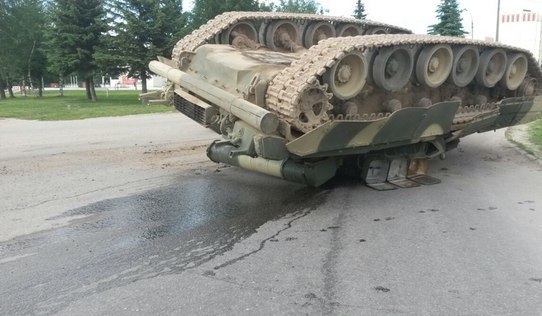

 Re: Russian Ground Forces: News #2
Re: Russian Ground Forces: News #2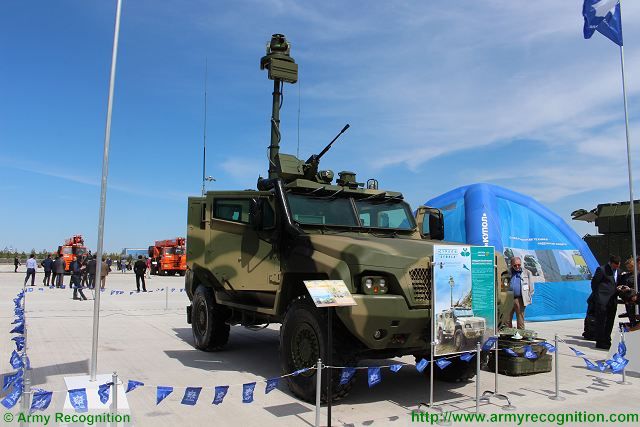

 Re: Russian Ground Forces: News #2
Re: Russian Ground Forces: News #2
 Re: Russian Ground Forces: News #2
Re: Russian Ground Forces: News #2
 Re: Russian Ground Forces: News #2
Re: Russian Ground Forces: News #2 Re: Russian Ground Forces: News #2
Re: Russian Ground Forces: News #2 Re: Russian Ground Forces: News #2
Re: Russian Ground Forces: News #2 Re: Russian Ground Forces: News #2
Re: Russian Ground Forces: News #2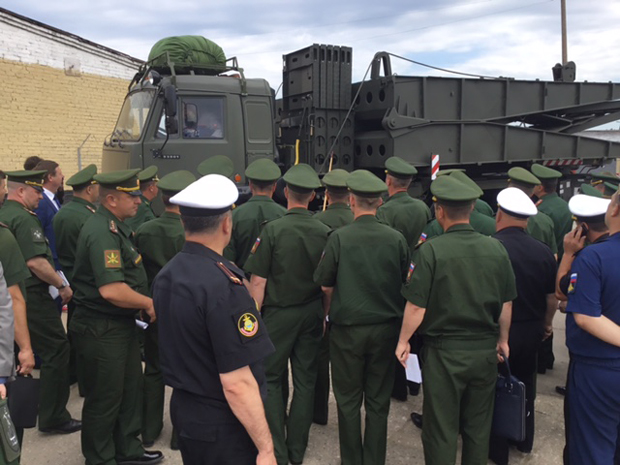

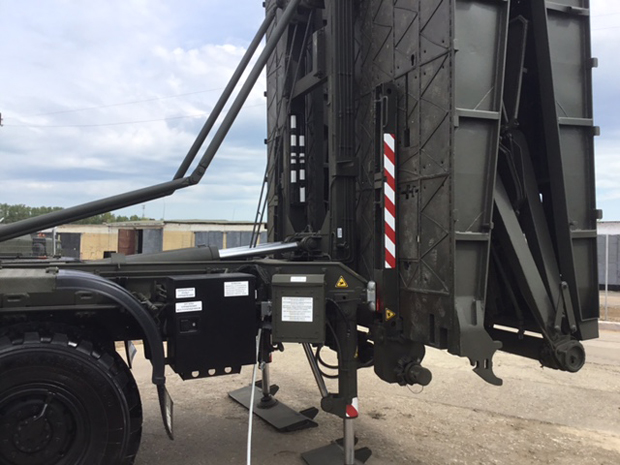
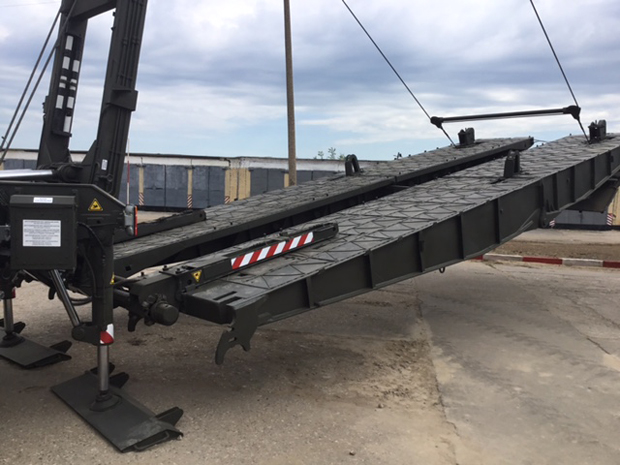

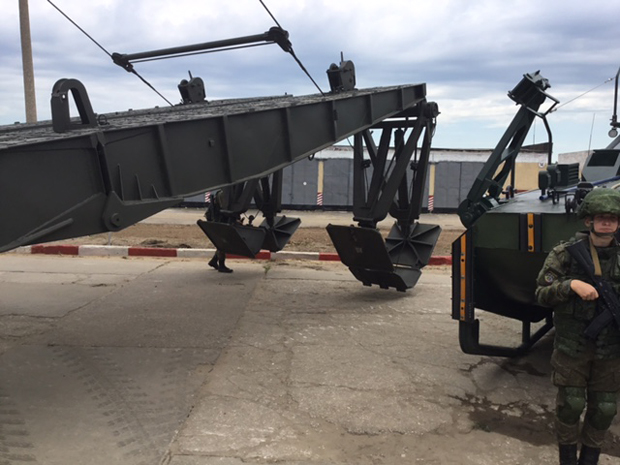

 Re: Russian Ground Forces: News #2
Re: Russian Ground Forces: News #2 Re: Russian Ground Forces: News #2
Re: Russian Ground Forces: News #2